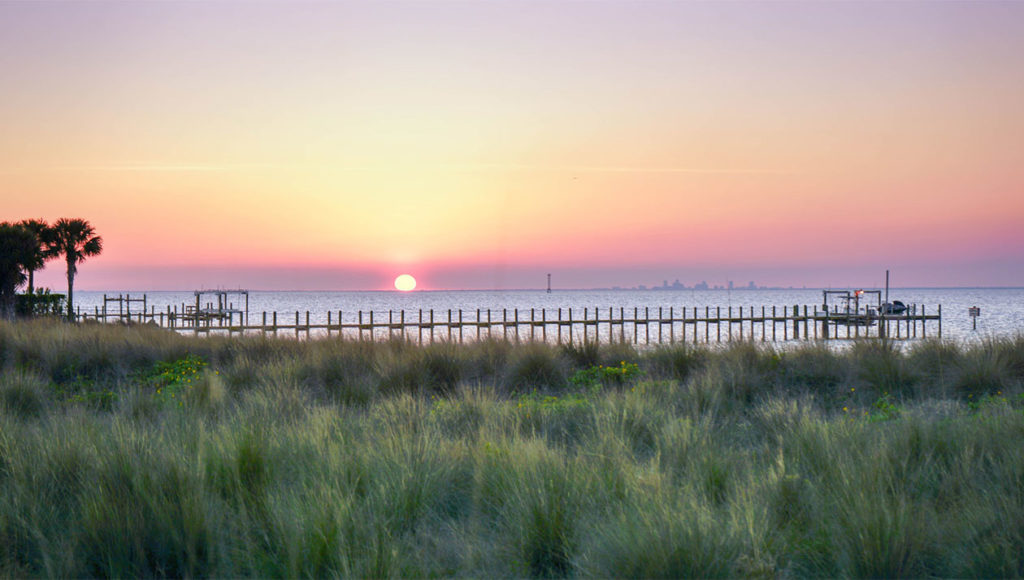

Red Tide and the Green Industry

Mac Carraway is the esteemed Executive Director of the Environmental Research & Education Foundation. Mac’s perspective on the recent red tide is informed by both his love for his home state of Florida and the stewardship of its natural resources as well as his work and experience in agriculture and the green industry.
By: Mac Carraway, Executive Director
Environmental Research & Education Foundation
As a long-time resident of Florida’s west coast, I have experienced quite a few red tides, and none are pleasant. The current 2018 red tide has lasted longer than those that have come before it, and it has received enormous local and statewide attention. Part of that attention is due to the fact that the red tide lends itself to sensational images and media reporting, and part of it is because it is election season. As a result, the impacts of the red tide have become a political football.
The reality of a red tide is well known: respiratory irritation, fish kills, and reddish-brown waters are just a few of the devastating results. Removal of the fish is a messy, smelly and drawn-out process. While the fallout of a red tide negatively impacts locals, it also scares away visitors, causing cancelled vacations and other unfortunate economic implications. For example, at the recent annual planning retreat for the Manatee Chamber of Commerce, it was made known that the suffering of on-island businesses in Bradenton, FL has been plentiful. Along with local wildlife, many business friends and associates are suffering—in part from the red tide, but also due to the excessive hype surrounding it. Adding a political element has not been helpful as it has turned this natural disaster into an opportunity for “blame politics”. In this case, agriculture and urban runoff are being portrayed as the instigators of this natural phenomenon. Somebody has to be held responsible, right?
In my opinion, the answer to this question is far more “no” than “yes”. Red tide episodes have plagued Florida’s coastlines for centuries, with some lasting years, long before there was any urban runoff or large-scale agriculture. Mote Marine Laboratory, a respected marine science organization located in Sarasota, FL, has stated that red tide usually arises 20–40 miles offshore, far away from the coast. At the same time, it is true that on some level, urban runoff may interact adversely with the red tide once it arrives.
Even if scientists could come up with some magic bullet to kill the algae that causes red tide (which would have to be a seriously magic bullet that did no harm to the Gulf’s vast and complex ecosystem), applying it would be nearly impossible, according to Mote. Rather, they are looking at some possible ways to control and mitigate red tide in very localized areas. Mainly they are focusing on studying red tide and finding and monitoring outbreaks. Their goal is to learn to predict its movements and to alleviate its effects.
So where does the green industry fit in? The answer is problematic. Many local governments, reacting to very heightened public concerns and fueled by social media and political rhetoric, feel the need to “just do something”. Most recently, the City of Venice, Florida, discussed a year-round fertilizer ban. However, after a lengthy public hearing and very thoughtful dialogue among the City Council, its staff, and the public, the City Commission passed a resolution calling for the voluntary reduction of fertilizer use throughout the year. Further, they committed to bring various stakeholders to the table to continue to look at what can be done to minimize any impacts that urban runoff might have on prolonging or worsening red tides. These are measured steps aimed at accumulating evidence, which is the foundation of understanding the problem and the solution.
As to the science on the green industry’s contribution, much of it points to a minimal impact. For example, the Florida Department of Environmental Protection’s recent leaching study pointed out the low levels of nitrogen leaching which occurs when typical fertilizers are properly applied to actively growing turfgrass. In addition, the limited evidence of the effectiveness of local summertime fertilizer bans, fairly common in Florida’s coastal communities, suggests they accomplish little, if any, benefit to local runoff. Most evidence points to septic discharges and other large-scale stormwater impacts, which are finally getting the attention they deserve from local and statewide officials.
This is a complex and highly-charged issue which is not only not going to go away. Instead, it is going to grow in importance as population growth continues along Florida’s coastlines as development continues its march through the state. Making matters worse, recent episodes of blue-green algae are often conflated with red tides. These conditions create the perfect storm of disruptive natural phenomena clashing with the human urge to find a quick-fix or a scapegoat. It threatens to be a formula for bad policy-making and unintended consequences if not approached carefully and most importantly, on the basis of real evidence—supported by independent research.
As an industry, we need to insert ourselves into the conversation as collaborators, experts and most of all, as Floridians who love and care for Florida’s water and natural systems as much as anyone else.

